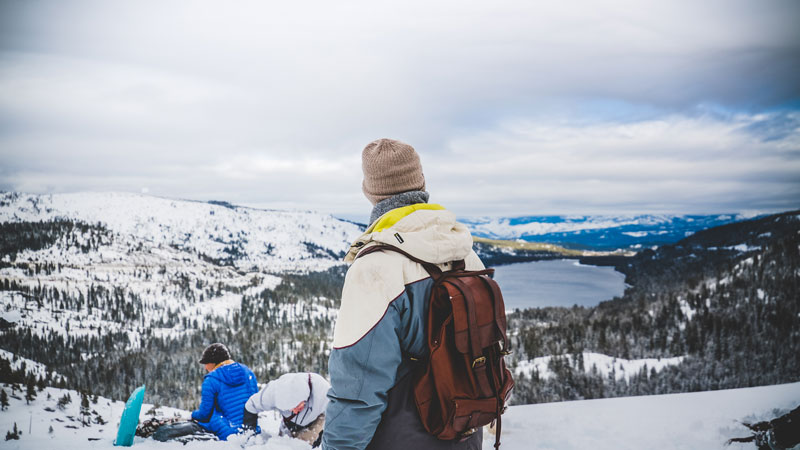Travel Marketing: Assessing the Impact of Experientialism

Travel Marketing: Assessing the Impact of Experientialism
2016 is the year of experientialism. Not that it didn’t exist before, but the balance between a desire for ‘stuff’ and for ‘experiences’ has shifted notably in favour of the latter. There are clear indications coming from retailers – as reported in the Washington Post, and elsewhere – that consumers would rather spend their hard-earned cash on a fancy restaurant booking or, indeed, a holiday.
And it’s particularly telling when Steve Howard, Head of Sustainability at IKEA tells attendees of the Guardian Sustainable Business Debate that ownership of material goods is reaching its limit:
“If we look on a global basis, in the west we have probably hit peak stuff. We talk about peak oil. I’d say we’ve hit peak red meat, peak sugar, peak stuff … peak home furnishings”.
But experientialism isn’t a rampant one way trend against consumer spending. As alluded to above, consumers are becoming more likely to splash out on experiences in the dining room or holidays at destinations previously considered unattainable.
Below we assess the impact experientialism is having on the wider travel and tourism industry, before offering a number of insights into how destinations and brands can tap into the ‘experience trend’ using strategy and social media.
The Rise of Experientialism
Reading this year’s travel trends reports can, at times, make for a sobering existence; travel safety concerns, fewer main holidays and concerns regarding job security all feature. But, taking the the bad with the good, a theme we can see running through every one of 2016’s reports is a move toward experientialism.
Nowhere is the evidence more profound than in BDRC Continental’s ‘UK Holiday Trends 2016’, which highlights the growth of the ‘bucket-list’ holiday as one of its top trends for the travel and tourism industry this year.
According to BDRC ‘The average Briton takes a bucket-list holiday once every 3 years, rising to more than once every couple of years amongst 18-34 year olds.’ And this is a trend backed up elsewhere, with ABTA reporting that the number of long-haul customers has witnessed an increase of 350% over the past decade.
Interestingly, experientialism isn’t a trend we’re seeing only in the international market either. And while the domestic long break is on the decline, ‘natural beauty’ and ‘places of interest’ – experiences, in other words – are the two biggest motivations for choosing a holiday ahead of ‘guaranteed sun’ and ‘rest my mind and body’. Correspondingly, ‘Scotland and the South West are the biggest draws’.
Promoting the ‘Experience’
Clearly, as BDRC puts it, ‘the desire for unique experiences is growing’, and this is a trend destinations and travel brands alike should be aware of. That means factoring must-see and must-do experiences into marketing strategies across the board.
Without wanting to sound overly reductionist, the must-see and must-do should form the basis of all marketing strategies and tactics in the travel and tourism industry. And it is likely experientialism won’t simply disappear overnight.
Social Media Strategy
Though it’s unlikely to be your only marketing channel, or even sole digital marketing channel, social media – as we’ve shown here – presents a very real opportunity for destinations and travel brands alike to showcase their offering.
Let’s consider some statistics:
- 83% of holidaymakers using the internet for inspiration turn to social media (Google)
- 52% of users said their friends’ photos inspired destination decisions (tnooz)
- 52% of travelers changed their travel plans based on social media (adweek)
- 76% of people post holiday photos to a social network (tnooz)
Categorically, social media should form part of – perhaps even the greater part of – the marketing strategy for brand and businesses in the travel and tourism industry as it can be used to influence traveller decision making at every stage of the holiday booking cycle.
But there’s yet further evidence of a parallel between the rise of experientialism and social media. As ITB’s ‘Travel Trends Report’ points out, ‘more international travellers are… actively posting their holiday experiences on social media, with the percentage now having risen to nearly 50%’.
This type of user-generated content (UGC) is invaluable for any business, particularly those in travel and tourism where compelling imagery really IS king. And without a doubt, your social media strategy should look to take advantage of it whenever possible.
Sharing Experience
Capitalising on UGC is one of the more complex aspects of any social media strategy, as it isn’t something you can control. The key here is being able to feed the experiences of your patrons back into the travel planning cycle. The idea being that trips already taken and captured then inspire the ‘next generation’ of holidaymakers.
Some of this will happen naturally, with grateful customers sharing their photos with you and thanking you for the experience. But incentivising the process, or even providing a platform for image sharing can bring a welcome boost. This user generated content is one of the most valuable assets your business can get their hands on.
Create albums on Facebook and Pinterest for users to share their photos to, and encourage it organically with regular page updates. This is something Tourism Australia has done to raucous success.
Another approach would be to align your brand with popular hashtags across social media platforms, encouraging users to share their snaps as part of a wider theme. And if you have the resource, you could even work to create a hashtag specifically relating to your business or destination.
Finally, users – particularly fans – love recognition. Don’t be scared to offer recognition to user generated content. For instance, regramming compelling imagery tagged with your hashtag has been shown to be an effective way of generating impressions and increasing followership.
Final Thoughts
Experientialism is a trend that will continue to grow. And while assertions that “we’ve reached peak stuff” maybe be hyperbolic, we will continue to see consumers spend more on experiences than material goods. Destinations and other travel businesses need to be aware of this trend and factor it into their wider marketing strategy.
Applying this specifically to social media, the direction of travel and tourism marketing strategies must be towards compelling experiences, activities and images to encourage ‘bucket-list’ travel. User generated content is particularly important here, with social media users being more willing than ever to share their experiences across platforms.
—
If you found this article interesting or insightful, please head over to our case studies for examples of how strategic social media has benefitted our travel and tourism clients.
Digital Visitor is the UK's leading strategic agency in travel, tourism & hospitality. For any more information on how we can help, get in touch.



%202-1.png)






